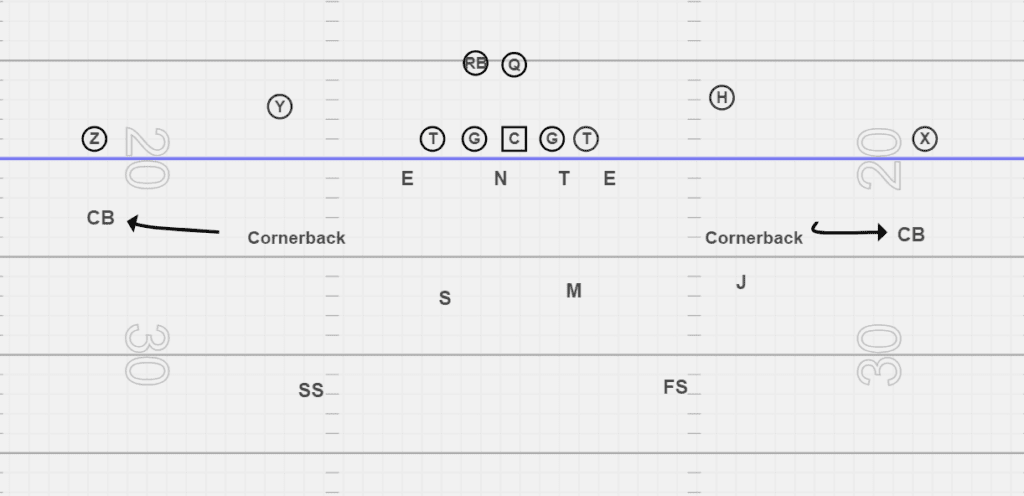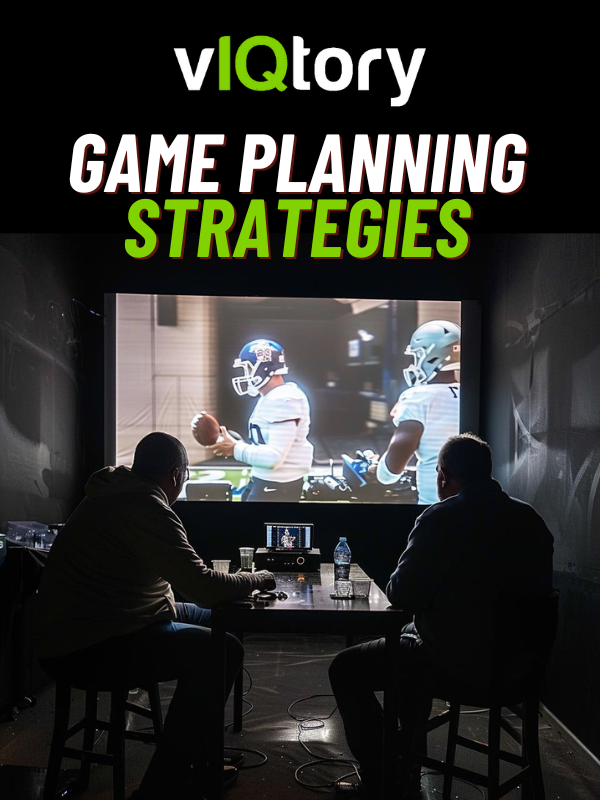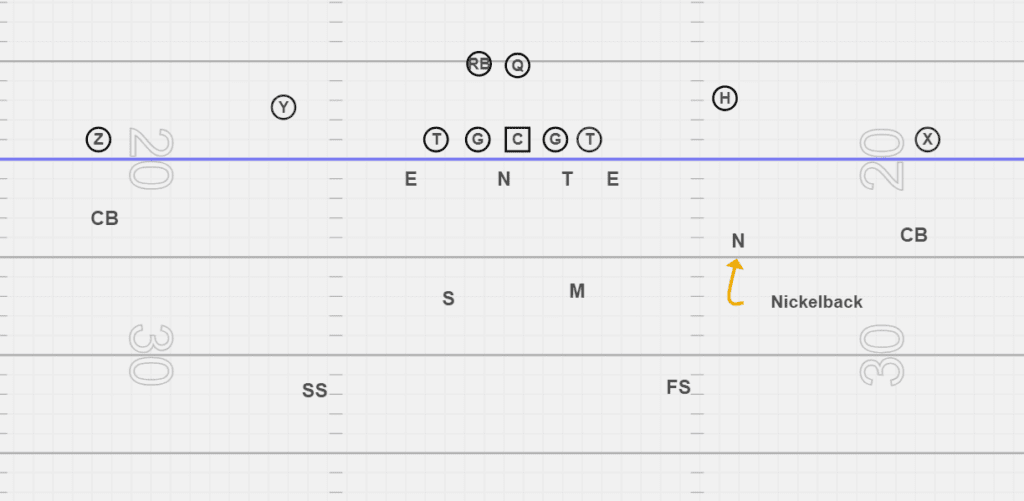Defensive backs in football are defensive players whose primary responsibility is to cover the pass. There are different defensive backs that coaches will use to cover wide receivers.
This article will show you how to play defensive back and the different defensive back positions.
What Are Defensive Backs In Football?
Defensive backs (also known as DBs) are defensive players whose primary responsibility is to cover the pass.
Coaches use different defensive backs throughout the game, based on personnel and scheme.
The two types of defensive backs are corners and safeties. Let’s learn about both positions.
What Is A Safety In Football?
Safeties in football are essential because they are typically the defense’s last line of defense. There are called safeties because they are positioned to keep the defense safe.
Safeties are often lined up 10-15 yards away from the line of scrimmage and are primarily used to cover the middle of the field.
Coaches may use 1 or 2 safeties based on their scheme.
Safeties are often athletic players who can run toward the line of scrimmage to make open-field tackles or cover receivers in open space.
Safeties need to do both to help their team in both running and passing situations. Safeties are often broken into two different positions.
Free Safety
Free safety is a defensive back position in football. Coaches will use the free safety as the deepest player in the defensive formation.
This player is responsible cover reading the quarterback and following the ball wherever the play goes.
If the quarterback throws the football, they will track the ball and intercept it.
If the offense runs the football, they will run as fast as possible to make a tackle.
The free safety player has both speed and athletism to track the ball through the air.
Strong Safety
Another type of safety is the strong safety. The strong safety is a hybrid between a linebacker and safety.
This unique position on defense requires both athletism and toughness. Strong safeties must cover slot receivers and play zone coverage for passing plays.
The strong safety is expected to play fast on run plays and get to the running back as quickly as possible.
What Is a Cornerback In Football?
The cornerback is also in the defensive back grouping. Cornerbacks are positioned on the edge of the defense, in the corner.
Cornerbacks are mainly responsible for covering wide receivers and protecting the edge of the defense on runs.
Cornerbacks are often the most athletic players on the field because they need to run with wide receivers in man-to-man coverage.
The two types of techniques a corner will play are man coverage, where the cornerback will follow the receiver wherever he goes, and zone coverage, covering an area of the field.
Learn How To Watch Film Properly…
Uncover your opponent’s offensive and defensive tendencies so you can easily build a game plan.
Inside You’ll Find:
- Strategies to pick apart defenses
- How to identify player weaknesses
- How to save time in your weekly breakdowns
What Is a Nickelback In Football?
A Nickelback refers to a cornerback who comes into the game to cover the pass. The reason it’s called a nickelback is that it’s often the 5th defensive back on the field.
The Nickelback is often referred to as a space-eating defender and will play similarly to a linebacker in the box instead of the typical cornerback on the edge of the defense.
He will cover short passes over the middle and run with running backs if they go out into a route.
Depending on their scheme, coaches may use a safety as their Nickelback or even a cornerback.
Qualities Of A Good Safety In Football
The defensive backs are listed as your primary responsibility when you’re playing safety in football, but there are other things a safety needs to do well.
Tackling
One of the most essential things a safety needs to learn is to tackle in open space.
You want your safeties to be good tacklers, and you want them able to hit the ball carrier without putting themselves in danger of getting hurt or getting called for illegal contact.
Tackling in space is one of the hardest things to do. We recommend checking out our tackling page in order to prepare yourself for tackling in space.
Cover Wide Receivers
Safeties may be tasked with covering receivers man to man. This means following smaller and shiftier receivers all over the field. This task is one of the hardest things to do in football.
Based on the coach’s scheme, safeties will also be tasked with playing zone coverage. This means they are responsible for covering the middle of the field, or even 1/2 of the field. To learn more about zone coverages, read here.
Support The Run
A safety will often be responsible for helping stop the run. Because he is in the middle of the field, it is common for safeties to make tackles.
While they are responsible mainly for covering the pass, they need to support run fits. Some coaches will even have their safeties cover a gap in the run game.
To learn more about run fits and gaps, read this article here.
Cornerback Attributes
There are a few attributes that every corner must possess.
Athleticism
The cornerback will often be asked to cover the team’s best receiver. So they need to have good footwork, speed, and quickness.
Because they’re often covering the opponent’s best receiver, cornerbacks win a lot of their battles at the line of scrimmage before either one of them has the ball in his hands.
They do this by jamming receivers at the line and then breaking up passes by getting a hand in there before the ball gets there.
Shed Blocks
Another trait every corner should possess is the ability to shed blocks and make tackles.
Due to the fact, that cornerbacks often play so close to wide receivers, they will have to shed the block to make a tackle on the running back.
If you’re a cornerback, we recommend doing different shock and shed drills to discard wide receiver blocks properly.
Keep Learning
A defensive back should have good ball skills, a high football IQ, and be able to cover tight ends and wide receivers.
The position demands that each player have a skill set of quick feet, a strong change of direction, and the ability to play man to man coverage. All of these are very hard to teach.
This is why we created the Defensive Back University course. Inside you will find everything you need to build a defensive back to cover any receiver!
Below are more articles to help you learn about defensive backs.
What Does A Safety Do In Football? Learn Here
What Is A DB In American Football? Explained
Defensive backs are divided into two sub-positions; corner and safety.
These players are primarily responsible for stopping the pass and supporting the defensive line and linebackers on the run.
If you want to learn more about the defensive back position, we recommend checking out our list of courses here.
If you want to learn more about football in general, we recommend you check out our learning center for more!




